Shri Jawala Mata Ji
Shri Jawala Mukhi Temple
Jawala Mukhi Temple is a famous Hindu Shrine located in district Kangra Himachal Pradesh, India. It is one of the 51 Shakti Peethas of the country and dedicated to Goddess Jawalamukhi who is considered the deity of the ‘flaming mouth’. Legend has it that this is the place where Goddess Sati’s tongue fell on the Earth when Lord Vishnu cut apart her body with his Sudharshan Chakra. She is revered as Maa Durga who is manifested here as the flames that leap through the fissured rocks. A total of nine flames are ignited in the temple, which represent the nine Goddesses – Mahakali, Annapurna, Chandi, Hinglaj, Vidhya Basni, Mahalakshmi, Saraswati, Ambika and Anji Devi. A large number of devotees from all over India visit the temple during the year to worship these holy flames.
Shri Jwalamukhi Mandir is situated in the Jwalamukhi sub-division at an altitude of 600 meters above sea level, located in the valley of Kalidhar, located in the Shivalik mountain range of district Kangra, Himachal Pradesh. The distance of this holy place from district headquarter Dharamshala is 50 kms. Devotees use road, rail and air to reach here. It is 200 KM from Chandigarh, 118 KM from Jalandhar, 105 KM from Pathankot, 180 KM from Shimla. The nearest railway station is Jwalamukhi Road Ranital and can be reached by air from Gagal airport.
History of Shri Jawalamukhi Temple
Himachal Pradesh is known as Devbhoomi which means the land of Gods and Goddesses. According to the Hindu mythology, Sati Goddess was born when Gods concentrated their entire energy on the earth. Goddess Sati was born and brought up by Prajapati Daksha and later married Lord Shiva. Once Prajapati Daksha organized a yajna in which everyone was invited except Lord Shiva. Sati felt humiliated and insulted by such act of her father. She decided to take revenge by immolating herself in the yajna. Her this action infuriated Lord Shiva he carried her corpse around the three worlds.
All the deities became concerned by Lord Shiva’s act and decided to contact Lord Vishnu for help. Lord Vishnu decided to take an action and cut down Sati’s body by his Sudharshan Chakra which got scattered into 51 pieces at various places.These places Known as Shakti Peethas which is regarded as the power centre of Goddess Sati.
Jawalamukhi is one of the forms of Maa Durga where the tongue of goddess Sati fell. The Goddess is believed to be the tiny flames that ignite everyday through the fissure in the age old rocks.
Origin and Significance
The recognition of Shri Jwalamukhi Temple is paramount among the 51 Shakti Peethas . The main significance of this temple is there is no idol to worship. The temple has flawless blue flames where worshippers pay their respect. These flames which are believe to 1 be manifestation of Goddess Sati. According to mythology. Daksh Prajapati’s daughter Sati and her husband Shiva were not invited to the huge yagya performed by him. Mother Sati reached the yajna without being invited, but as a humiliation of her husband Shiva, she jumped into the yagya kund and abandoned her body . Enraged on getting the news of Sati’s death .Lord Shiva destroyed the yagya and took the charred body of Sati over his shoulder. Seeing the terrible form of Shiva, the gods prayed to Lord Vishnu to pacify Shiva’s anger. In order to save the entire creation from the catastrophe, Vishnu ji divided the body of Sati into 51 pieces. The Shakti Peethas were established at the places where the parts of Sati fell. The place where the tongue of Sati fell, the goddess appeared in the form of flame. This place became famous by the name of Shri Jwalamukhi.
Temple Construction
According to a legend, a shepherd used to bring cow herds of Emperor Bhumi Chand to graze around this place in Satyuga. A milch cow’s milked during the day by a girl full of divine leela. This cow did not give milk at night in the cowshed. When it was discovered, flames appeared at that place. King Bhumi Chand who had a dream about this sacred place decided to build a temple which came to know as Jawalamukhi temple. The right to worship this goddess was given to two Brahmins of Bhojak caste from Shak Dweep . The descendants of the same Brahmins have been worshiping in the court of Goddess Jwalamukhi till date.
Darshan of Main Jyoti and other holy lights
In the Shri Jwalamukhi temple, the Mother Goddess is seen in the form of Navjyotis. These flames are divine lights that create the entire universe in the form of Nav Durga. Sattna, Raja and Tath are the servants of these divinities The following are the blessings bestowed on devotees on the worship of Navjyoti’s :-
- Mahakali – Goddess of devotion and liberation
- Annapurna – Goddess of food
- Chandi – Enemy Destroyer
- Hinglaj Bhavani – Destroyer of Vyapam
- Vindhayavahini- Shauka Vinashani
- Mahalakshmi – Goddess of wealth and splendor
- Saraswati – Vidya Datri
- Ambika – Child Provider
- Anjana Devi – Goddess of Age and Happiness
Temple dome architecture
Ahmad Shah Abdali was defeated by Maharana Ranjit Singh in 1765 at Khyber Darwaza, Walakot Afghanistan, also known as the gate of foreign invaders. In this victory, Maharana Ranjit Singh got the Kohinoor diamond and gold deposits. Out of the gold reserves received by Maharana, 50% was used in the construction of the main dome of Golden Temple, Amritsar, 25% in the Jwalamukhi temple and 25% in the Kashi Vishwanath temple. The main dome has been built in the mandapa style, the present temple is in the same form. Thereafter, the main silver door of the temple was donated by son of Maharaja Ranjit Singh.
Dhyanu Bhagat Story
It is said that during the reign of Mughal emperor Akbar, Dhyanu Bhagat, a resident of Nadaun village, was travelling with other travellers with the desire to visit the temple. Seeing the crowd of people, Akbar’s soldiers brought him to the king’s court and the reason for this journey and importance of the temple were inquired. Dhyanu Bhagat glorified Jwala Mai, the master of the whole world, on which Akbar cut off the head of a horse to test the Bhagat and asked Dhyanu Bhagat to revive the horse from the power of his Jwala Mai. Dhyanu Bhagat came to the court of Jwala Mai and reverently requested that if you do not accept my prayer, then he will also cut off his head and dedicate it to Mahamayi. After waiting for a the miracle of the goddess for a few moments, Dhyanu Bhagat cut off his head and placed it at the feet of Bhagwati. On this, Mother Bhagwati appeared in a real form and attached the head of Dhyanu Bhagat herself and also the head of the horse in Akbar’s court. Pleased with the devotion of Dhyanu Bhagat, the goddess gave a boon with abhay daan that any devotee who will visit her court with a sincere heart and offer coconut in place of head, will get all his wishes fulfilled .
Akbar Story
Impressed by the devotion and reverence of Dhyanu Bhagat, King Akbar sent his soldiers to Jawalamukhi, It was conveyed to King Akbar that the flames from the ground at the said place are ignited without any fuel, ghee, etc. Akbar tried to extinguish these flames by constructing a water canal but Mother Bhagwati maintained her flame form. After that an attempt was made to extinguish these holy flames with huge iron pans, but the flame appeared by tearing the iron. King Akbar, on the advice of the courtiers, reached with a gold umbrella to seek Jwala Mai, but to shatter his pride, Bhagwati changed the form of the umbrella and its metal . This umbrella got converted into a metal which is neither of iron, nor of copper nor of glass. This umbrella is still preserved in the temple premises.
Historical Heritage
According to Tarikh-e-Firozshahi, there was a library of thirteen hundred books in Jwalamukhi temple, out of which one book was translated by Firoz Shah Tughlaq.
After conquering the Kangra fort in 1620 AD, Jahangir also visited Kangra and this temple has been mentioned.
In 1809 AD, after the Gorkha invaders were driven out of Kangra. A treaty was signed between Maharana Ranjit Singh and Raja Sansar Chand in the Jwalamukhi temple.
Worship Method
In Shri Jwalamukhi Mandir, the responsibility of worship is entrusted to Bhojak clan. According to this tradition, only after marriage, the priest is entitled to worship, whereas the initiation of the pilgrimage is given by the father. This hereditary priestly class has the status of Bhojak clan.
Other places of interest
Gorakh Dibbi – This place is on the right side of the Jwalamukhi temple. Gorakh Nath Ji did penance here. The water of the kund keeps on boiling. The water is really cold. Here, on showing a burning lamp of incense in a small pond, a big light appears on the water. It is mentioned in the scriptures by the name of Rudra-kunda. Nagarjuna is said to have come visited this place with Gorakh Nath Ji.
Radha-Krishna Temple – There is a Radha-Krishna temple near Gorakh Dibbi which dates back to the time of the Katoch kings.
Shiva-Shakti – This place is above Gorakh Dibbi by climbing some fifteen steps. Here there is a vision of Jyoti with Shivling, hence the name of this place is Shiva-Shakti.
Sid Nagarjuna– This place is above Shiva-Shakti by climbing one of the furlong steps. There are two pagodas on its way, here there is a stone-statue some one and a half cubits high. This is called Sid Nagarjuna. There is a famous anecdote that when Guru Gorakh Nath Ji went to bring khichdi and did not return even after a long time. He climbed the hill to see where Guru Ji had left. After coming there, they could not find Guru Ji, in the end they found this place to be very picturesque and sat here meditating.
Ten-fifteen years back, the travellers used to feel a lot of trouble to climb here, but now the stairs are made from the industry of the officials here, it does not seem that much trouble.
Ambikeshwar – This place is nearby Nagarjuna and this place is Manmatt Bhairav which is famous as Ambikeshwar.
Ashtadashbhuji Devi – This place is also very ancient, it is present at a distance of one mile towards west from the temple of Bhagwati Jwalamukhi. There is a huge pond here in which it is said that by bathing, Phulbahari (white leprosy) is cured. There is also a crematorium here.
Teda Mandir – This temple is located about 2Km from the main temple dedicated to Lord Ram.
Bhairav Nath Mandir – This temple is located in beautiful forest about 1Km from the main temple.
Major worship rituals
In Shri Jwalamukhi temple, both Swaha and Swadha methods are used. In Agnidev, the deities are satisfied with Swaha and the ancestors are satisfied by Swadha. The following are the main worship rituals in the temple:-
Om Havan:- There is a special significance of performing Havan Yagya in Shri Jwalamukhi Temple. It is said that in this temple, the tongue of Mother Bhagwati is worshipped and the fruit of 10,000 sacrifices is obtained from one ritual performed in the Havan Yagya.
Khappar Pujan:- Khappar Puja is done in Yogini Kund located at the main entrance of the temple, by this worship Pitra Dosh and Vastu Dosh ends.
Om Kaumari Poojan:- The female form of Mother Sati is worshiped in the Jwalamukhi temple. Mother’s special grace is obtained by worshiping girls. This worship blesses the devotee with victory and wealth .
Worship Methods of Shri Jwalamukhi Temple
Shri Jwalamukhi Devi is worshiped in three ways:-
- Panchopchar method:- In this method, scent, flowers, incense, lamp, naived etc. are offered in the service of the mother.
- Dashopachar method: – Worship is done with Padya, Arghya, Achaman, Bath, Gandha, Flower incense, Naived lamp.
- Shodashopachara method: – There is a law to worship Mateshwari with asana, welcome padya, arghya, achaman, honey, pure bath, clothes, bhushan, sandalwood, perfume, flowers etc.
Major Festivals of Shri Jwalamukhi Temple
- The birth anniversary of Mata Jwala ji in idol form is celebrated every year on Krishna Paksha Chaturthi date of Falgun month. This idol form was established in 1965 by Raja Baldev Singh of Guler dynasty.
- New Year Puja: – In every Chaitra month Shukla Paksha Pratipada, flag hoisting, worship is celebrated on the occasion of establishment and beginning of summer season.
- Navratri festival:- Chaitra Navratri and Sharad Navratra.
- Gupt Navratri Festival:- Magha and Ashadha Gupta Navratri.
Facilities to devotees and social welfare work by Jwalamukhi Temple Trust
Presently the following facilities are being provided to the devotees by the temple:
- Free langar to the pilgrims
- Financial assistance for marriage of poor girls
- Free Medical facility to the devotees
- Temple trust is running a Sanskrit College
- Contribution to relief fund
- Deployment of security personnel for the safety of pilgrims
- Proper arrangement of cleanliness in the temple premises
- Water and toilet facilities
- Yatri Niwas (Matri Sadan)
Shri Jwalamukhi Shaktipeeth
Introduction
Shri Jwalamukhi Mandir is situated in the Jwalamukhi sub-division at an altitude of 600 meters above sea level, located in the valley of Kalidhar, located in the Shivalik mountain range of district Kangra, Himachal Pradesh. The distance of this holy place from district headquarter Dharamshala is 50 kms. Devotees use road, rail and air to reach here. It is 200 KM from Chandigarh, 118 KM from Jalandhar, 105 KM from Pathankot, 180 KM from Shimla. The nearest railway station is Jwalamukhi Road Ranital and can be reached by air from Gagal airport.
Origin and Significance
The recognition of Shri Jwalamukhi Temple is paramount among the 51 Shaktipeeths. According to mythology, his daughter Sati and her husband Shiva were not invited to the huge yagya performed by King Daksha. Mother Sati reached the yajna without being called, but as a humiliation of her husband Shiva, she jumped into the pool and abandoned her body. Seeing the terrible form of Shiva, the gods prayed to Lord Vishnu to pacify Shiva’s anger. In order to save the entire creation from the catastrophe, Vishnu ji divided the body of Sati into many pieces and Shakti Peeths were established at the places where the parts of Sati fell. The place where the soul of Sati fell, the goddess appeared in the form of flame. This place became famous by the name of Shri Jwalamukhi.
Temple and construction
According to a legend, a shepherd used to bring a herd of cows of Emperor Bhumi Chand to graze around this place in Satyuga. A milch cow’s milk used to be taken out during the day by a girl full of divine leela. This cow did not give milk at night in the cowshed. When it was discovered, flames appeared at that place, on getting information about them, King Bhumi Chand got the temple built here and got the right to worship two Brahmins of Bhojak caste from Shak Dweep to worship the goddess. The descendants of the same Brahmins have been worshiping in the court of Goddess Jwalamukhi till date.
Temple dome architecture
Ahmad Shah Abdali was defeated by Maharana Ranjit Singh in 1765 at Khyber Darwaza, Walakot Afghanistan, also known as the gate of foreign invaders. In this victory, Maharana Ranjit Singh got the Kohinoor diamond and gold deposits. Of the gold reserves received by Maharana, 50% was used in the construction of the main dome of Golden Temple, Amritsar, 25% in the Jwalamukhi temple and 25% in the Kashi Vishwanath temple. This magical dome has been built in the mandapa style, the present temple is in the same form. Thereafter, the main silver door of the temple was acquired by Bhutaraja Dilip Singh, son of Maharana Ranjit Singh.
Dhyanu Bhagat Story
It is said that during the reign of Mughal emperor Akbar, Dhyanu Bhagat, a resident of Nadaun village, was traveling with other travelers with the desire to see the mother, seeing the crowd of people, Akbar’s soldiers brought him to the king’s court and the reason for this journey And asked the importance. Dhyanu Bhagat glorified Jwala Mai, the master of the whole world, on which Akbar cut off the head of a horse to test Bhagat and asked Dhyanu Bhagat to revive the horse from his Jwala Mai. kept. Dhyanu Bhagat came to the court of Jwala Mai and reverently requested that if you do not accept my prayer, then he will also cut off his head and dedicate it to Mahamayi. After examining the miracle of the goddess for a few moments, Dhyanu Bhagat cut off his head and placed it at the feet of Bhagwati. On this, Mother Bhagwati appeared in a real form and attached the head of Dhyanu Bhagat herself and in Akbar’s court also the head of the horse was attached to the torso. Pleased with the devotion of Dhyanu Bhagat, the mother gave a boon with abhay donation that any devotee who will meditate on my form with a sincere heart in my court and offer coconut in place of head, I will accept his all-good wishes.
Akbar Story
Impressed by the devotion and reverence of Dhyanu Bhagat, King Akbar sent a volcano from his soldiers, a message was given to King Akbar that the flames from the ground at the said place are ignited without any fuel, ghee, etc. Akbar tried to stop these flames by constructing a water canal to stop these flames, but Mother Bhagwati maintained her flame form. After that an attempt was made to extinguish these holy flames with huge iron pans, but the flame appeared by tearing the iron. King Akbar, on the advice of the courtiers, reached Sawman’s gold umbrella to see Jwala Mai, but to break his pride, Bhagwati changed the form of the umbrella so that this umbrella was neither of iron, nor of copper nor of glass. This umbrella still exists today.
Historical Heritage
According to Tarikh-e-Firozshahi, there was a library of thirteen hundred books in one in the Jwalamukhi temple, out of which one book was translated by Firoz Shah Tughlaq.
After grabbing the Kangra fort in 1620 AD, Jahangir also visited Kangra and this temple has been mentioned.
In 1809 AD, after the Gorkha invaders were driven out of Kangra, Sandi was signed between Maharana Ranjit Singh and Raja Sansar Chand in the Jwalamukhi temple.
Worship Method
In Shri Jwalamukhi Mandir, the responsibility of worship is entrusted to the matrimonial and hereditary priest for the fulfillment of the Guru tradition, this tradition is being carried out for the last hundreds of years. According to this tradition, only after receiving initiation after marriage, the priest is entitled to worship, whereas the initiation of the pilgrimage is given by the father, this hereditary priestly class has the status of Bhojak dynasty.
Other places of interest
Apart from Bhagwati Jwalamukhi in Kshetra Jwalamukhi, the other places of interest are:
Gorakh Dibbi – This place is on the right side by climbing ten steps in the circumambulation of the Jwalamukhi temple. Gorakhnathji did penance here. Those who had gone to ask for khichdi after holding the box did not come back with khichdi and the water in the box did not get hot. The water of the kund keeps on boiling. The water is really cold. Here, on showing a burning lamp of incense in a small pond, a big light appears on the water. It is written in the scriptures by the name Rudra-kunda. Nagarjuna is said to have come with these Gorakhji.
Radha-Krishna Temple – There is a Radha-Krishna temple near Gorakh Dibbi which dates back to the time of the Katoch kings.
Shiva-Shakti – This place is above Gorakh Dibbi by climbing some fifteen steps. Here there is a vision of Jyoti with Shivling, hence the name of this place is Shiva-Shakti.
Siddhi Nagarjuna– This place is above Shiva-Shakti by climbing one of the furlong steps. There are two pagodas on its way, here there is a stone-statue some one and a half cubits high. This is called Siddha Nagarjuna. There is such a famous saying about them that when Guru Gorakhnathji went to bring khichdi and did not return even after a long time, he climbed the hill to see where Guruji had left. After coming there, they did not see Guruji, in the end they found this place to be very picturesque and sat here after meditating.
Ten-fifteen years ago, travelers used to feel a lot of trouble to climb here, but now the stairs are made from the industry of the officials here, it does not seem that much trouble.
Ambikeshwar – This place is one furlong east of Nagarjuna and this place is Manmatt Bhairav which is famous as Ambikeshwar. Their philosophy is also important. The officials here have also put a good effort in upgrading.
Ashtadashbhuji Devi – This place is also very ancient, which is present at a distance of one mile towards west from the temple of Bhagwati Jwalamukhi. There is a huge pond here in which it is said that by bathing, Phulbahari (white leprosy) goes away. There is also a crematorium here.
The following hymns are recited by the priests during the sleep-aarti of Durga Jwalamukhi, which seems to be very good.
Worship of Shri Jwalamukhi Devi
Shri Jwalamukhi Devi is worshiped in three ways:-
- Panchopchar Vidhi:- In this method, scent, flowers, incense, lamp, naived etc. are offered in the service of the mother.
- Dashopachar method: – Worship is done with Padya, Arghya, Achaman, Bath, Gandha, Flower incense, Naived lamp.
- Shodashopachara method: – There is a law to worship Mateshwari with asana, welcome padya, arghya, achaman, honey, pure bath, clothes, bhushan, sandalwood, perfume, flowers etc.
Major Festivals of Shri Jwala Ji Temple
- The birth anniversary of Mata Jwala ji in idol form is celebrated every year on Krishna Paksha Chaturthi date of Falgun month. This idol form was established in 1965 by Raja Baldev Singh of Guler dynasty.
- New Year Puja: – In every Chaitra month Shukla Paksha Pratipada, flag hoisting, worship is celebrated on the occasion of establishment and beginning of summer season.
- Navratri festival:- Chaitra Navratri and Sharad Navratra.
- Gupt Navratri Festival:- Magha and Ashadha Gupta Navratri.
Facilitation of devotees and social welfare work by Jwalamukhi Mandir Trust
Presently the following facilities are being provided to the devotees by the temple trust under the guidance of Honorable Commissioner Temple and District Collector Kangra:-
- Free langar arrangement
- Grant for marriage of poor girls
- Medicine distribution to devotees
- Operation of Sanskrit College
- Contribution to relief fund
- Deployment of security personnel for the safety of passengers
- Proper arrangement of cleanliness in the temple premises
- Water and toilet system
- Yatri Niwas (Mother House)
Shri Jwalamukhi Shaktipeeth
Introduction
Shri Jwalamukhi Mandir is situated in the Jwalamukhi sub-division at an altitude of 600 meters above sea level, located in the valley of Kalidhar, located in the Shivalik mountain range of district Kangra, Himachal Pradesh. The distance of this holy place from district headquarter Dharamshala is 50 kms. Devotees use road, rail and air to reach here. It is 200 KM from Chandigarh, 118 KM from Jalandhar, 105 KM from Pathankot, 180 KM from Shimla. The nearest railway station is Jwalamukhi Road Ranital and can be reached by air from Gagal airport.
Origin and Significance
The recognition of Shri Jwalamukhi Temple is paramount among the 51 Shaktipeeths. According to mythology, his daughter Sati and her husband Shiva were not invited to the huge yagya performed by King Daksha. Mother Sati reached the yajna without being called, but as a humiliation of her husband Shiva, she jumped into the pool and abandoned her body. Seeing the terrible form of Shiva, the gods prayed to Lord Vishnu to pacify Shiva’s anger. In order to save the entire creation from the catastrophe, Vishnu ji divided the body of Sati into many pieces and Shakti Peeths were established at the places where the parts of Sati fell. The place where the soul of Sati fell, the goddess appeared in the form of flame. This place became famous by the name of Shri Jwalamukhi.
Temple and construction
According to a legend, a shepherd used to bring a herd of cows of Emperor Bhumi Chand to graze around this place in Satyuga. A milch cow’s milk used to be taken out during the day by a girl full of divine leela. This cow did not give milk at night in the cowshed. When it was discovered, flames appeared at that place, on getting information about them, King Bhumi Chand got the temple built here and got the right to worship two Brahmins of Bhojak caste from Shak Dweep to worship the goddess. The descendants of the same Brahmins have been worshiping in the court of Goddess Jwalamukhi till date.
Temple dome architecture
Ahmad Shah Abdali was defeated by Maharana Ranjit Singh in 1765 at Khyber Darwaza, Walakot Afghanistan, also known as the gate of foreign invaders. In this victory, Maharana Ranjit Singh got the Kohinoor diamond and gold deposits. Of the gold reserves received by Maharana, 50% was used in the construction of the main dome of Golden Temple, Amritsar, 25% in the Jwalamukhi temple and 25% in the Kashi Vishwanath temple. This magical dome has been built in the mandapa style, the present temple is in the same form. Thereafter, the main silver door of the temple was acquired by Bhutaraja Dilip Singh, son of Maharana Ranjit Singh.
Dhyanu Bhagat Story
It is said that during the reign of Mughal emperor Akbar, Dhyanu Bhagat, a resident of Nadaun village, was traveling with other travelers with the desire to see the mother, seeing the crowd of people, Akbar’s soldiers brought him to the king’s court and the reason for this journey And asked the importance. Dhyanu Bhagat glorified Jwala Mai, the master of the whole world, on which Akbar cut off the head of a horse to test Bhagat and asked Dhyanu Bhagat to revive the horse from his Jwala Mai. kept. Dhyanu Bhagat came to the court of Jwala Mai and reverently requested that if you do not accept my prayer, then he will also cut off his head and dedicate it to Mahamayi. After examining the miracle of the goddess for a few moments, Dhyanu Bhagat cut off his head and placed it at the feet of Bhagwati. On this, Mother Bhagwati appeared in a real form and attached the head of Dhyanu Bhagat herself and in Akbar’s court also the head of the horse was attached to the torso. Pleased with the devotion of Dhyanu Bhagat, the mother gave a boon with abhay donation that any devotee who will meditate on my form with a sincere heart in my court and offer coconut in place of head, I will accept his all-good wishes.
Akbar Story
Impressed by the devotion and reverence of Dhyanu Bhagat, King Akbar sent a volcano from his soldiers, a message was given to King Akbar that the flames from the ground at the said place are ignited without any fuel, ghee, etc. Akbar tried to stop these flames by constructing a water canal to stop these flames, but Mother Bhagwati maintained her flame form. After that an attempt was made to extinguish these holy flames with huge iron pans, but the flame appeared by tearing the iron. King Akbar, on the advice of the courtiers, reached Sawman’s gold umbrella to see Jwala Mai, but to break his pride, Bhagwati changed the form of the umbrella so that this umbrella was neither of iron, nor of copper nor of glass. This umbrella still exists today.
Historical Heritage
According to Tarikh-e-Firozshahi, there was a library of thirteen hundred books in one in the Jwalamukhi temple, out of which one book was translated by Firoz Shah Tughlaq.
After grabbing the Kangra fort in 1620 AD, Jahangir also visited Kangra and this temple has been mentioned.
In 1809 AD, after the Gorkha invaders were driven out of Kangra, Sandi was signed between Maharana Ranjit Singh and Raja Sansar Chand in the Jwalamukhi temple.
Worship Method
In Shri Jwalamukhi Mandir, the responsibility of worship is entrusted to the matrimonial and hereditary priest for the fulfillment of the Guru tradition, this tradition is being carried out for the last hundreds of years. According to this tradition, only after receiving initiation after marriage, the priest is entitled to worship, whereas the initiation of the pilgrimage is given by the father, this hereditary priestly class has the status of Bhojak dynasty.
Other places of interest
Apart from Bhagwati Jwalamukhi in Kshetra Jwalamukhi, the other places of interest are:
Gorakh Dibbi – This place is on the right side by climbing ten steps in the circumambulation of the Jwalamukhi temple. Gorakhnathji did penance here. Those who had gone to ask for khichdi after holding the box did not come back with khichdi and the water in the box did not get hot. The water of the kund keeps on boiling. The water is really cold. Here, on showing a burning lamp of incense in a small pond, a big light appears on the water. It is written in the scriptures by the name Rudra-kunda. Nagarjuna is said to have come with these Gorakhji.
Radha-Krishna Temple – There is a Radha-Krishna temple near Gorakh Dibbi which dates back to the time of the Katoch kings.
Shiva-Shakti – This place is above Gorakh Dibbi by climbing some fifteen steps. Here there is a vision of Jyoti with Shivling, hence the name of this place is Shiva-Shakti.
Siddhi Nagarjuna– This place is above Shiva-Shakti by climbing one of the furlong steps. There are two pagodas on its way, here there is a stone-statue some one and a half cubits high. This is called Siddha Nagarjuna. There is such a famous saying about them that when Guru Gorakhnathji went to bring khichdi and did not return even after a long time, he climbed the hill to see where Guruji had left. After coming there, they did not see Guruji, in the end they found this place to be very picturesque and sat here after meditating.
Ten-fifteen years ago, travelers used to feel a lot of trouble to climb here, but now the stairs are made from the industry of the officials here, it does not seem that much trouble.
Ambikeshwar – This place is one furlong east of Nagarjuna and this place is Manmatt Bhairav which is famous as Ambikeshwar. Their philosophy is also important. The officials here have also put a good effort in upgrading.
Ashtadashbhuji Devi – This place is also very ancient, which is present at a distance of one mile towards west from the temple of Bhagwati Jwalamukhi. There is a huge pond here in which it is said that by bathing, Phulbahari (white leprosy) goes away. There is also a crematorium here.
The following hymns are recited by the priests during the sleep-aarti of Durga Jwalamukhi, which seems to be very good.
Worship of Shri Jwalamukhi Devi
Shri Jwalamukhi Devi is worshiped in three ways:-
- Panchopchar Vidhi:- In this method, scent, flowers, incense, lamp, naived etc. are offered in the service of the mother.
- Dashopachar method: – Worship is done with Padya, Arghya, Achaman, Bath, Gandha, Flower incense, Naived lamp.
- Shodashopachara method: – There is a law to worship Mateshwari with asana, welcome padya, arghya, achaman, honey, pure bath, clothes, bhushan, sandalwood, perfume, flowers etc.
Major Festivals of Shri Jwala Ji Temple
- The birth anniversary of Mata Jwala ji in idol form is celebrated every year on Krishna Paksha Chaturthi date of Falgun month. This idol form was established in 1965 by Raja Baldev Singh of Guler dynasty.
- New Year Puja: – In every Chaitra month Shukla Paksha Pratipada, flag hoisting, worship is celebrated on the occasion of establishment and beginning of summer season.
- Navratri festival:- Chaitra Navratri and Sharad Navratra.
- Gupt Navratri Festival:- Magha and Ashadha Gupta Navratri.
Facilitation of devotees and social welfare work by Jwalamukhi Mandir Trust
Presently the following facilities are being provided to the devotees by the temple trust under the guidance of Honorable Commissioner Temple and District Collector Kangra:-
- Free langar arrangement
- Grant for marriage of poor girls
- Medicine distribution to devotees
- Operation of Sanskrit College
- Contribution to relief fund
- Deployment of security personnel for the safety of passengers
- Proper arrangement of cleanliness in the temple premises
- Water and toilet system
- Yatri Niwas (Mother House)
Tourist Places Near Mata Jawalamukhi Temple
- Mata Baglamukhi Temple
- Kaleshwar Mahadev Temple
- Panch Thirthi Temple
- Ram Temple (Teda Mandir)
- Ashtbhuja Temple
- Bajreshwari Devi Temple Kangra
- Chamunda Devi Temple
- Mata Chintpurni Temple
Distance from Mata Jawalamukhi Temple
- Mata Baglamukhi Temple = 15 km
- Kaleshwar Mahadev Temple = 10 km
- Panch Thirthi Temple = 10 km
- Ram Temple (Teda Mandir) = 2 km
- Ashtbhuja Temple = 2 km
- Bajreshwari Devi Temple Kangra = 30 km
- Chamunda Devi Temple = 45 km
- Mata Chintpurni Temple = 35 km
Administration

Chief Commissioner Temple - Cum - Secretary of Language and Culture Department (H.P Shimla)

Assistant Commisioner (Temple)-Cum - S.D.M. Jawalamukhi
Name :- Mr. Sanjeev Sharma, H.A.S
Contact No:- 01970-223100
Email:- sdmjji-kan-hp@nic.in

Commissioner (Temple) –Cum - DC Kangra at Dharamshala
Name :- Dr Nipun Jindal (I.A.S )
Contact No:- 01892-222705
Email:- kangratemple@gmail.com

Temple Officer
Name:- Sh. Anil Kumar Sondhi (Tehsildar Jwalamukhi)
Contact:- 01970-222223
Email:- Jwalajimainder222223@gmail.com
Temple opening and closing time
In the winter
Morning 5:00 AM to 11:30 AM
AfterNoon 11:30 AM to 12:30 PM For Bhog
AfterNoon 12:30 PM to Night 9:00 PM
In Summer
Morning 4.30 AM to 11:30 AM
AfterNoon 11:30 AM to 12:30 PM For Bhog
AfterNoon 12:30 PM to Night 10:00 PM
Aarti Timing
In the winter
Morning 5:30 AM to 6:00 AM
11:30 AM to 12:30 PM For Bhog
Evening 6:00 PM to 7:00 PM
Shayan Aarti 8:00 PM to 8:40 PM
In Summer
Morning 5:00 AM to 5:30 AM
11:30 AM to 12:30 PM For Bhog
Evening 7:00 PM to 8:00 PM
Shayan Aarti 9:00 PM to 9:40 PM

Langar Facilities
Free langar facility is being provided to the pilgrims by the temple trust. The timing of langar is 12:30 PM – 02:30 PM for the lunch and 06:30PM- 08:30 PM for the dinner. During Navratras and other major festivals three times free langar is provided to the pilgrims. The temple trust is trying to provide better, hygienic and fresh food to the devotees.
Welcome to Shri Jawala Mata Ji
You have to Sign In or Sign Up for Darshan Parchi Booking
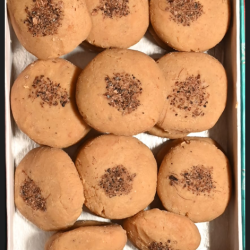
Khoya ka Pede
₹ 500
Khoya ka Pede...
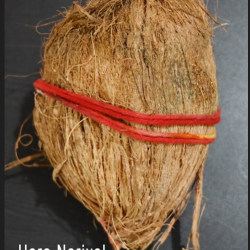
Nariyal
₹ 50
Sukha Nariyal...
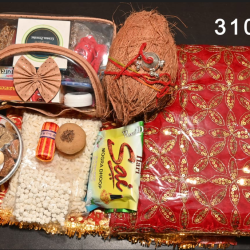
Rs.3100 Prashad
₹ 3100
Items Included - Naryial Sukha,Chunari Badi(3),Ela...
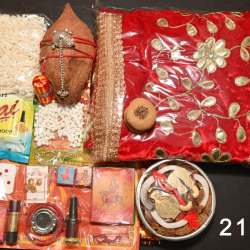
Rs.2100 Prashad
₹ 2100
Items Included - Naryial Sukha,Chunari Badi(2),lac...

Rs.1100 Prashad
₹ 1100
Items Included - Naryial Sukha,Chunari Badi,lachid...
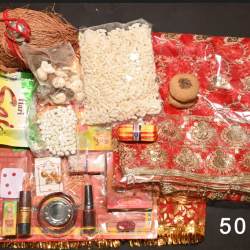
Rs.501 Prashad
₹ 501
Items Included - Naryial Sukha,Chunari Badi,lachid...
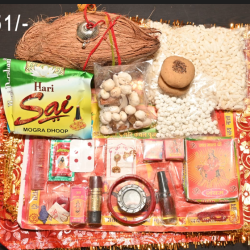
Rs.251 Prashad
₹ 251
Items Included - Naryial Sukha,Chunari Badi,lachid...
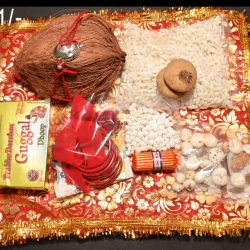
RS.151 Prashad
₹ 151
Items Included - Naryial Sukha,Chunari Meduim,lach...
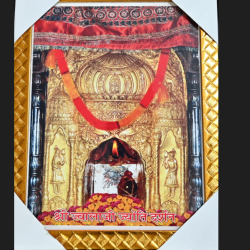
Mataji ki Photo...
₹ 150
Mataji ki Photo(Smal...

Mataji ki Photo(Big)
₹ 250
Mataji ki Photo(Big)...










